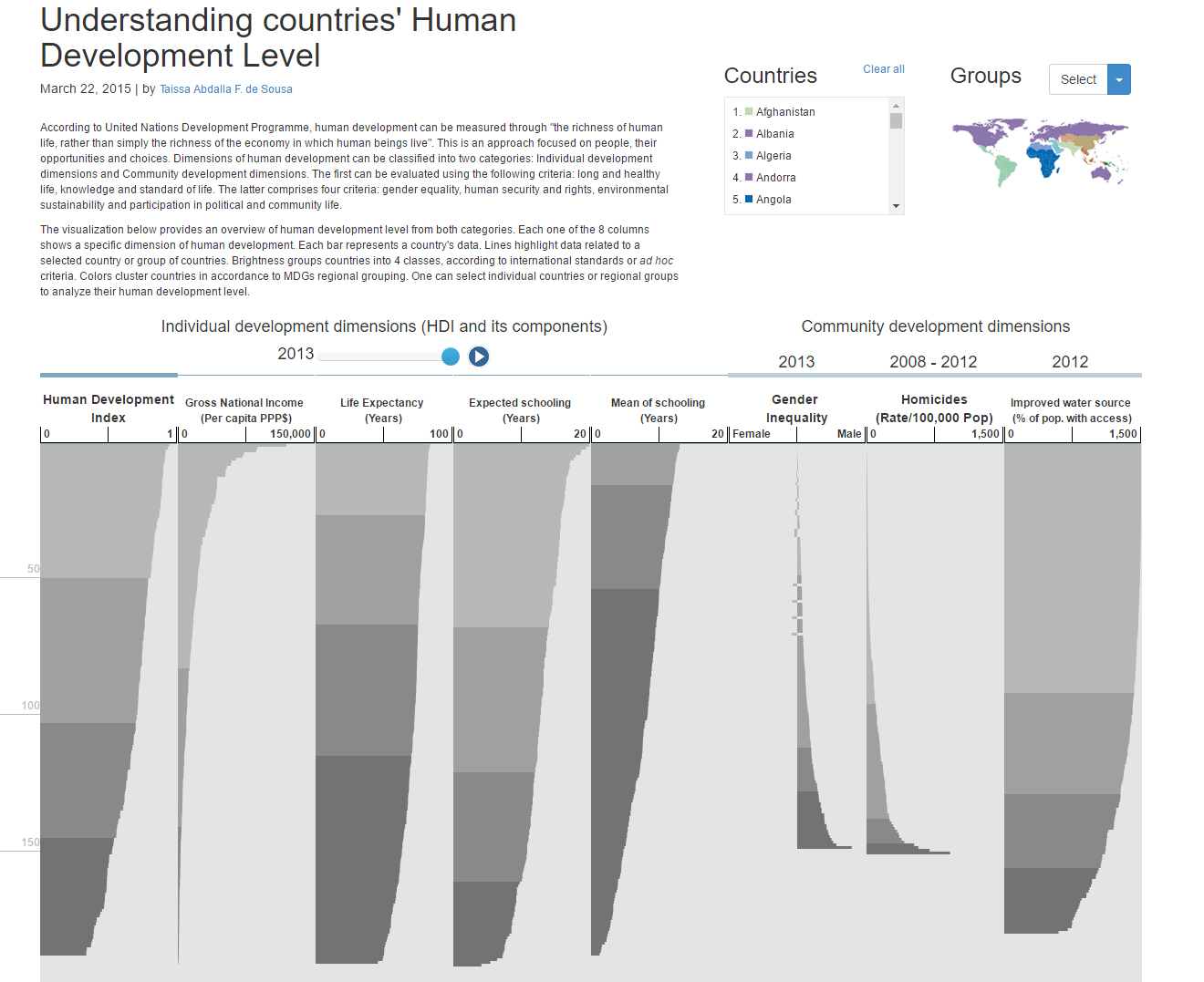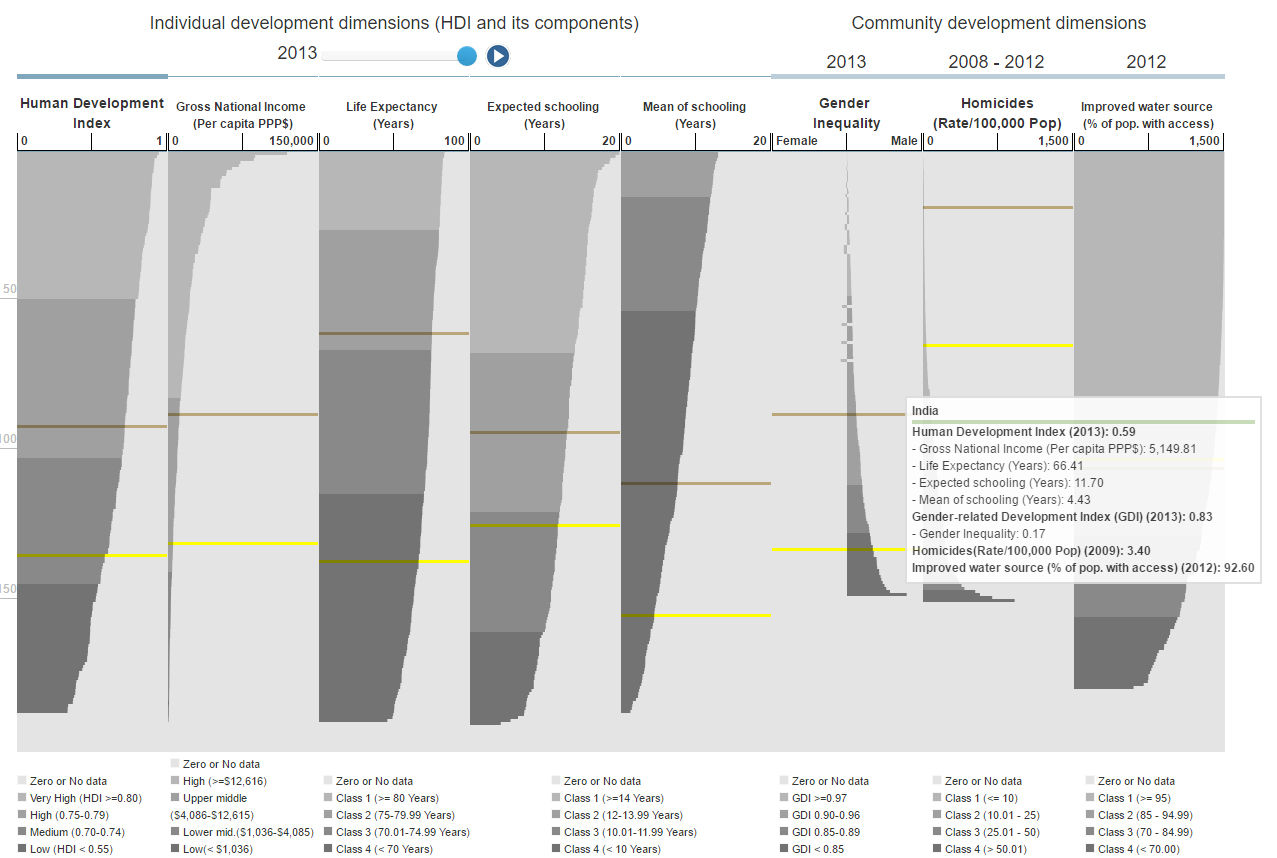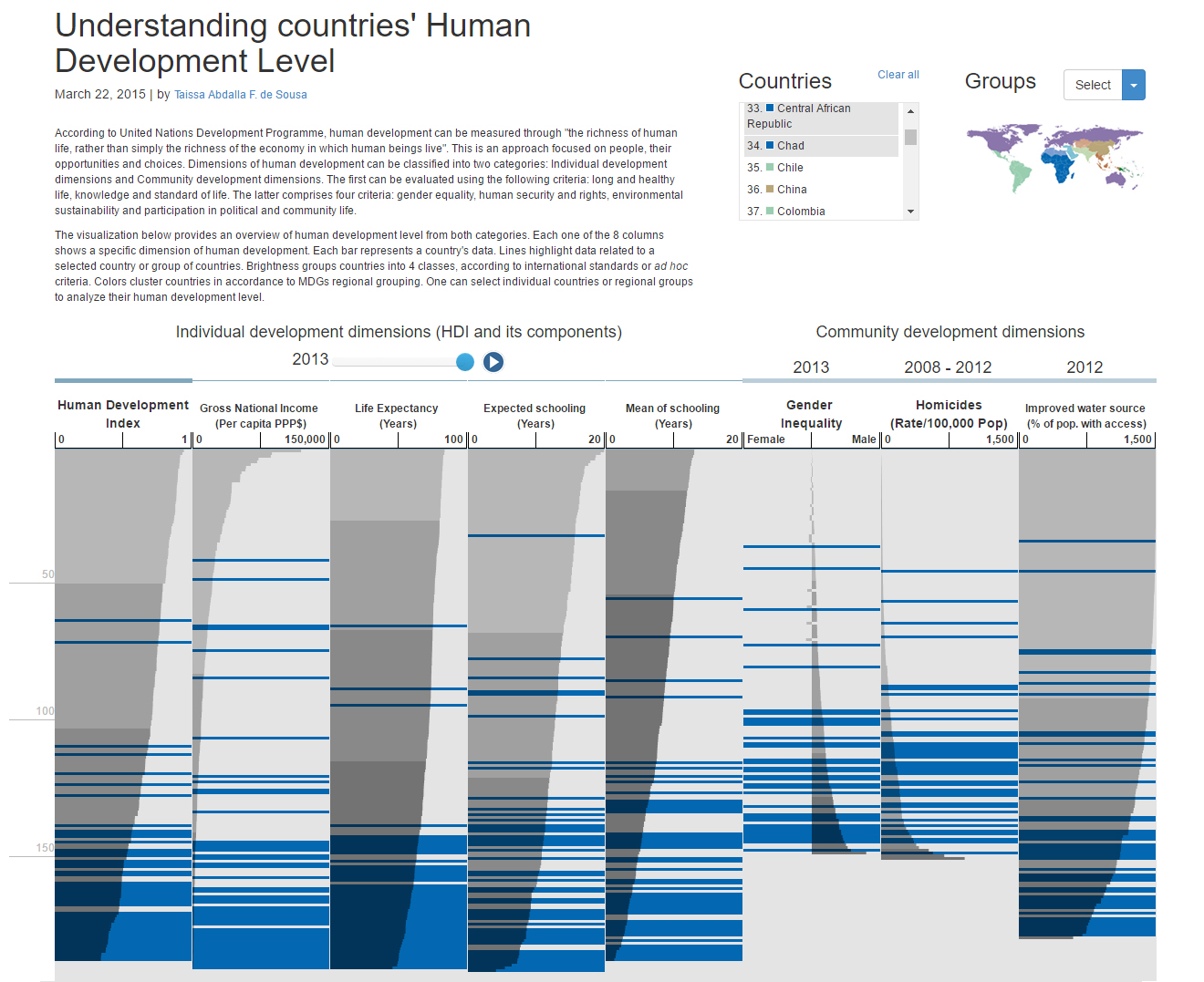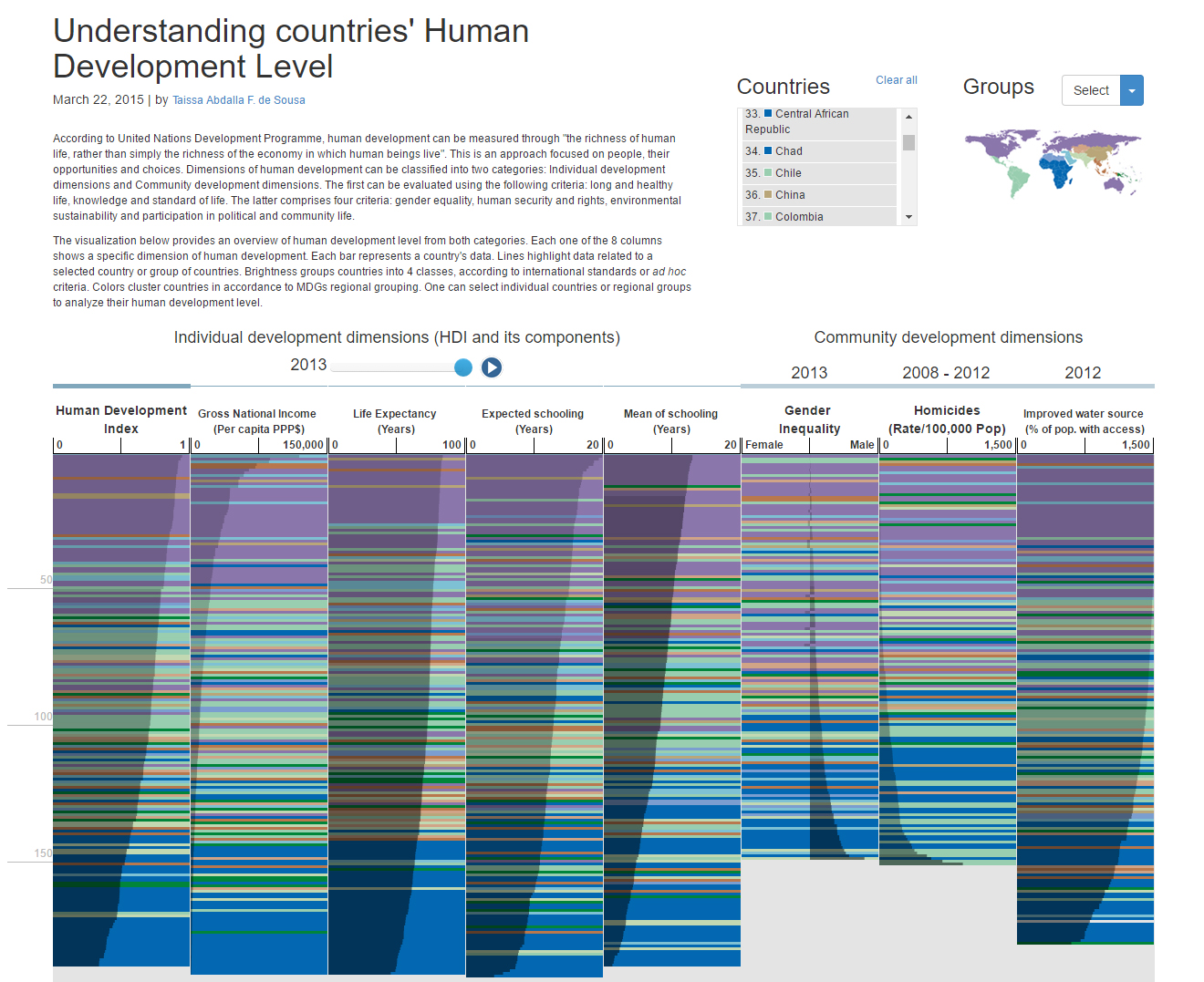Taissa A. F. de Sousa
Interaction & Visualization Designer, M.Sc. in Computer Science
- Achievements
-
Portifolio Presentations
- Ibge's Portal of Maps (IBGE, 2015)
- Visualization for the Millennium Development Goals (UN, 2014)
- SDMX Visualization Package and SDMX Chart generator/Visualization of population (UN, 2014)
- Recommender System to Support Chart Constructions with Statistical Data (HCII, 2014)
- Visualization for Human Develpment (2015)
- Portal of IBGE (IBGE, 2002-2011)
- Press releases
- Bio & contact
Visualizations of Human Development
Available at: http://taissasousa.com/datafest/visualization.htm

Duties: UI/UX, Data Visualization, Front-end development
Concepts & Methods: Storytelling, Human computer-Interaction, Interactive visualization
Tools & Tech: D3, Javascript, Jquery, CSS, HTML
View presentation
Content and target group
According to United Nations Development Programme, human development can be measured through "the richness of human life, rather than simply the richness of the economy in which human beings live". This is an approach focused on people, their opportunities and choices. Dimensions of human development can be classified into two categories: Individual development dimensions and Community development dimensions. The first can be evaluated using the following criteria: long and healthy life, knowledge and standard of life. The latter comprises four criteria: gender equality, human security and rights, environmental sustainability and participation in political and community life.
Citizens from all over the world.
Selected indicators
- Human Development Index and its components
- Gender Inequality
- Homicide rates
- Improved water source
Next
Goal: Create a beautiful visualization to answer:
How can the human development level of a country be best understood in one snapshot?
How might we best compare the indicators and data for different countries, and their evolution over time, and what insight might that yield?
How can you show the strengths of the different components that make up the indices for different countries, and how might that impact human-development focused policy in a country?
How can inequalities between countries, groups and genders be best illustrated and how might this impact the level of human development of a country?
Thank you
Taissa Abdalla Filgueiras de Sousa
taissa.sousa@gmail.com
Now, visit the HDI visualizations.
Back to top



